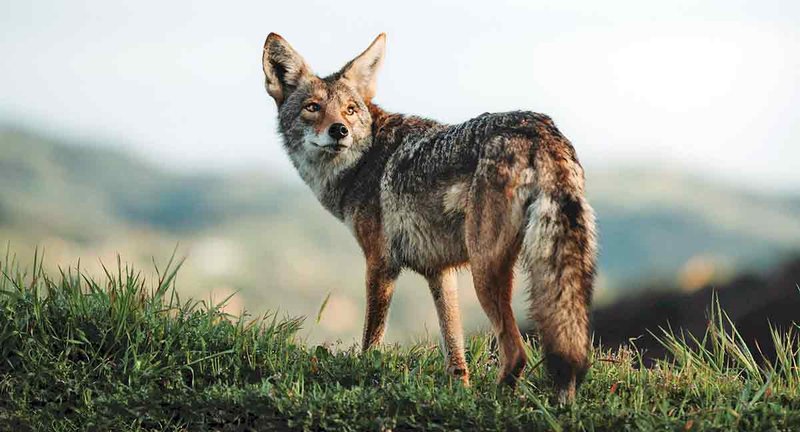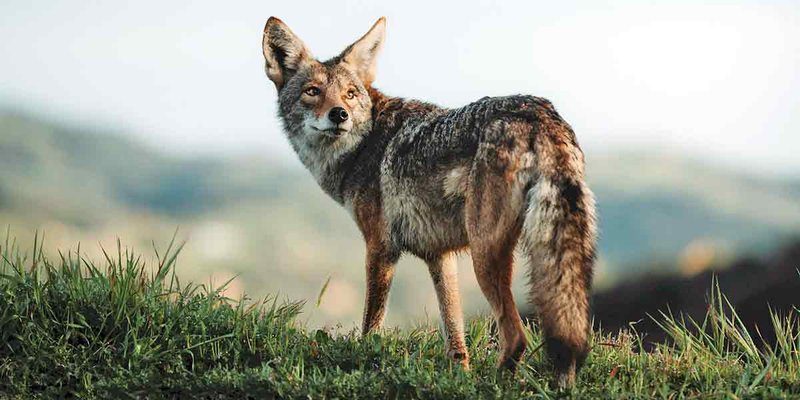
Jackals belong to the Canidae family, which also includes wolves, foxes, and domestic dogs. While they’re not as famous as their larger relatives, like wolves, they play a significant role in their ecosystems. Their ability to adapt to various environments—from savannas to deserts—shows just how resilient and resourceful they can be. Understanding the truths and myths about jackals can help us appreciate their role in nature better. So, grab a cup of coffee, and let’s explore what’s real and what’s just a tall tale.
Myth 1: Jackals Are Just Like Dogs
You might be wondering if jackals are simply wild dogs. While they are relatives, there’s more to the story. Jackals and dogs do share some similarities, but they have distinct differences that set them apart.
First off, jackals are generally more solitary than domestic dogs. They often work in pairs or small family groups instead of packs. You might spot them roaming alone or with their mate, unlike dogs that thrive on human companionship. Also, jackals have a unique vocalization style. Their howls can sound eerily similar to those of wolves, but they also make quick barks and yips, communicating effectively without the need for a human-like bond.
Additionally, jackals have adapted to a wild lifestyle that emphasizes independence. They hunt various prey, including rodents, birds, and sometimes even larger animals when necessary. In contrast, domestic dogs have been bred to rely on humans for food and companionship. So, while they share a family tree, jackals and dogs lead very different lives in the wild.
Myth 2: Jackals Are Cunning and Evil
We’ve all heard the tales of jackals portrayed as cunning tricksters, evoking images of deceit and malice. Here’s the thing: these portrayals are more about storytelling than reality. Jackals are simply trying to survive, just like any other animal.
Cunning instincts in jackals often arise from their need to adapt. Their intelligence helps them find food, avoid danger, and navigate their communities. For instance, they’ve been known to work together when hunting smaller animals or even scavenging from larger predators. This behavior might seem clever, but it’s just a survival tactic.
Also, many people associate jackals with evil because of their scavenging habits. While they do eat carrion, it’s worth noting that scavenging is an important ecological role. It helps clean up the environment, preventing the spread of disease. So, instead of viewing them as evil, consider jackals as nature’s cleanup crew, playing a crucial part in maintaining a healthy ecosystem.
Myth 3: Jackals are Vicious Animals
Another common misconception is that jackals are vicious and aggressive. While they can defend themselves if threatened, they’re not inherently aggressive animals. Picture a jackal encountering a human—most likely, it will choose to run away rather than attack.
Jackals, particularly the golden jackal, tend to be shy and reclusive. They usually avoid confrontations and prefer a peaceful existence. Their natural behavior involves foraging for food and caring for their young. They’ll only resort to aggression when their territory is threatened or if they feel cornered.
Moreover, their adaptive behavior allows them to coexist with other animals. Jackals often avoid predators like lions and hyenas, steering clear of direct conflict. So, while they may have sharp teeth and a fierce appearance, they’re not out to harm anything unless absolutely necessary.
Myth 4: All Jackals Look the Same
You might think all jackals look alike, but that’s not true! There are several species of jackals, each with its own unique traits and appearances. The three most common types are the golden jackal, black-backed jackal, and side-striped jackal.
– Golden Jackal: This jackal has a tawny coat, blending well with its environment. It’s versatile and found in various habitats, from deserts to forests.
– Black-Backed Jackal: As the name suggests, this type has a distinctive black stripe along its back and a more slender body. They’re often spotted in open savannas and grasslands of Africa.
– Side-Striped Jackal: This jackal sports grayish fur with noticeable white stripes on its sides. It’s typically found in woodlands and is known for being more elusive than its relatives.
These differences are not just cosmetic—they reflect the jackals’ adaptations to their environments. Each species has evolved characteristics that help them thrive in specific habitats. So, next time you see a jackal, take a moment to appreciate its unique beauty rather than lumping them all together!
Myth 5: Jackals Only Hunt at Night
It’s a common belief that jackals are strictly nocturnal hunters. While they are known for being most active at dusk and dawn—often referred to as crepuscular—they can adjust their hunting schedules based on environmental factors and food availability.
Jackals are opportunistic feeders. This means they will hunt or scavenge during the day if the chance arises. For example, if they spot a vulnerable animal during daylight, they won’t hesitate to go for it. Additionally, in areas where competition for food is fierce, jackals may switch to daytime hunting to avoid clashes with other predators.
Their flexibility is one of their survival strategies. If they can adapt their eating habits to fit their environment, they’ll increase their chances of finding food. So, while you might see them more often at night, don’t be surprised to spot them out and about in the daylight hours.
Myth 6: Jackals Are Considered Pests
Many people view jackals as pests, similar to how some see raccoons or coyotes. However, considering them as mere nuisances overlooks their ecological importance. Jackals play a vital role in controlling the populations of other animals, including rodents and insects.
Without jackals, certain prey species might proliferate unchecked, leading to problems such as overgrazing. This can negatively affect local vegetation and disrupt ecosystems. By keeping these populations in check, jackals contribute to a balanced environment that benefits various species, including humans.
In some cultures, jackals are even respected for their resilience and resourcefulness. Recognizing their ecological role instead of viewing them solely as pests can foster a better understanding and appreciation of these remarkable animals. It’s a reminder that every creature has its place in the web of life.
Myth 7: Jackals Can’t be Domesticated
Last but not least, there’s a popular belief that jackals can’t be domesticated like dogs. While it’s true that attempts to domesticate jackals have not been notably successful, the reasoning behind this myth is nuanced.
Unlike domestic dogs, which have been selectively bred for thousands of years, jackals have adapted to a wild lifestyle that makes them less suitable as pets. They are more independent and less inclined to form the same social bonds with humans. This doesn’t mean they lack social intelligence; they simply have a different lifestyle and behavior pattern compared to dogs.
That said, there are rare instances where people have formed bonds with jackals in controlled environments. However, this isn’t the same as having a domesticated pet. For most people, jackals remain wild creatures best appreciated in their natural habitats.
In conclusion, debunking these myths about jackals helps us better understand their behavior and ecological significance. Instead of relying on stereotypes, it’s essential to view them for what they truly are: clever, adaptable animals that play an essential role in their ecosystems. So, whether you’re watching them in the wild or learning about them from afar, let’s appreciate jackals for the unique creatures they are.

